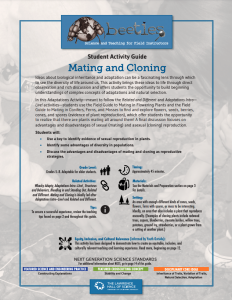Ideas about biological inheritance and adaptation can be a fascinating lens through which to see the diversity of life around us. This activity brings these ideas to life through direct observation and rich discussion and offers students the opportunity to build beginning understandings of complex concepts of adaptations and natural selection.
In this Adaptations Activity—meant to follow the Related and Different and Adaptations Intro— Live! activities—students use the Field Guide to Mating in Flowering Plants and the Field Guide to Mating in Conifers, Ferns, and Mosses to find and explore flowers, seeds, berries, cones, and spores (evidence of plant reproduction), which offer students the opportunity to realize that there are plants mating all around them! A final discussion focuses on advantages and disadvantages of sexual (mating) and asexual (cloning) reproduction.
Students will…
• Use a key to identify evidence of sexual reproduction in plants.
• Identify some advantages of diversity in populations.
• Discuss the advantages and disadvantages of mating and cloning as reproductive strategies.
• Begin to understand how matter cycles and how energy flows within an ecosystem.
Special Acknowledgements
We want to acknowledge Justice Outside for reviewing this session and supporting us to develop more equitable, inclusive, and culturally relevant instructional materials. Read more about our collaboration with Justice Outside.

